Subject Verb Agreement
advertisement
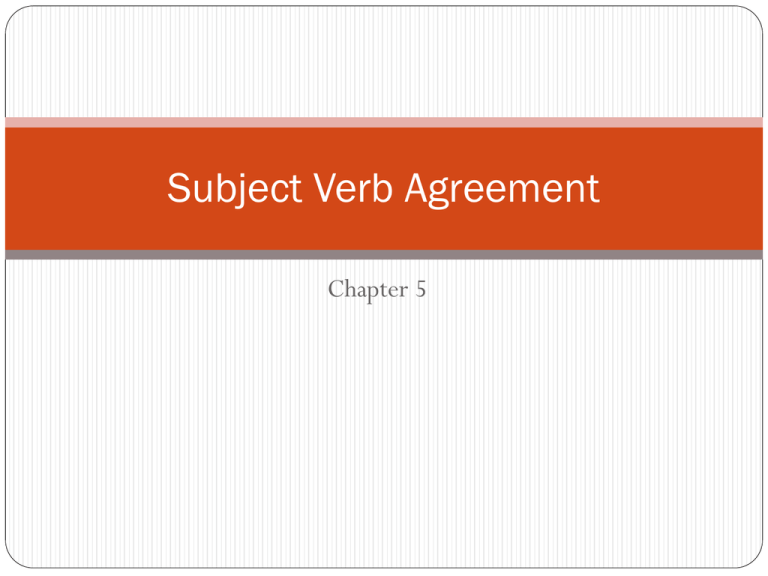
Subject Verb Agreement Chapter 5 A verb should agree in number with its subject. Singular A word that refers to one person, place, thing, or idea. He washes the dishes. (He is a singular subject so washes agrees.) Plural A word that refers to more that on person, place, thing, or idea. They wash the dishes. (They is a plural subject, so wash agrees.) Singular Video child I thief herself Plural Videos children we thieves themselves Singular and Plural A singular noun NO S on the end of it Dog, cat, building A singular verb Can have an S on the end of it. Attracts, holds, walks, attends A plural noun Can have an S on the end of it. Dogs, Cats, buildings A plural verb Normally no S on the end of it Sing, graduate, laugh Choose the correct verb People (walks, walk) House (has stood, have stood) Cattle (is running, are running) Result(is, are) Women (seems, seem) Children (sings, sing) To whisper (is, are) Phoebe (reads, read) Answers People (walks, walk) House (has stood, have stood) Cattle (is running, are running) Result(is, are) Women (seems, seem) Children (sings, sing) To whisper (is, are) Phoebe (reads, read) The number of the subject usually is not determined by a word in a phrase or clause following the subject. The apartments across the street do not have balconies. Do have agrees with apartments, not street. The planes pulling up to the gate were purchased by a movie company. Were purchased agrees with planes, not gate. Eli, one of my friends, was late. Was agrees with Eli, not friends. The movie that I saw two weeks ago was reviewed in today’s paper. Was reviewed agrees with movie, not weeks. Words in phrases As well as, along with, together with, and in addition to are compound prepositions. Words in phrases beginning with compound prepositions do not affect the number of the subject or verb. Example: Anne, together with her cousins, is backpacking in Nevada. A negative construction following the subject does not change the number of the subject Carl, not Juan and I, (is doing, are doing) the artwork Singular subject: Carl Singular Verb: is doing Burt, not Anne and Laura, (has, have) borrowed the bicycle pump. Singular subject: Burt Singular Verb: has Practice These pictures (show, shows) how noodles are prepared. SHOW First, the noodle maker (roll, rolls) out the dough as thin as possible. ROLLS Then, the cook (slice, slices) the folded layers. SLICES Practice (cont.) Next, the strands of noodles (is, are) separated and dusted with flour to prevent sticking. ARE After the noodles have dried a little, they (go, goes) into boiling water or broth to cook. GO The Japanese (enjoy, enjoys) noodles made from either wheat flour, or buckwheat flour. ENJOY Practice (cont) A dish of cooked noodles mixed with sauce, broth, fish, or vegetables (makes, make) a popular lunch. MAKES Noodle shops all over Japan (serves, serve) a variety of noodle dishes. SERVE These shops often (resemble, resembles) fast-food restaurants in the United States. RESEMBLE Identify the subject and choose the correct verb. A heaping basket of turnip greens (was, were) sitting on the counter. Subject : basket Verb: Was The cost of two new snow tires (was, were) more than I had expected. Subject: cost Verb: was The community college course on collecting stamps always (attracts, attract) many people. Subject: course Verb: attracts


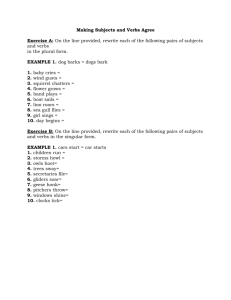
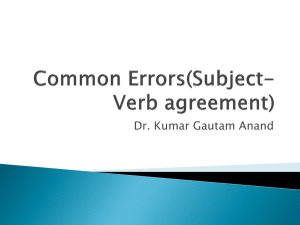
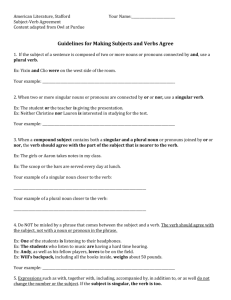
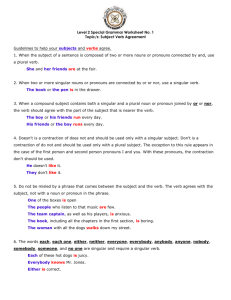


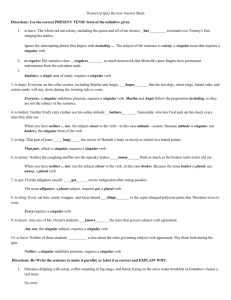
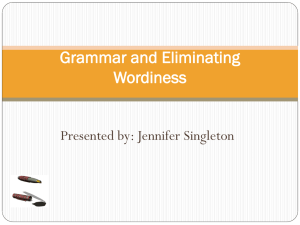
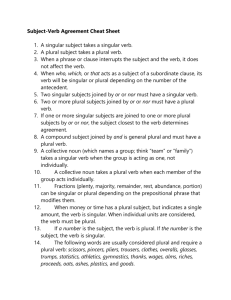
![Subject verb agreement rules [4/30/2013]](http://s3.studylib.net/store/data/007067847_1-0f3dfc0803503746ca1cde12721e7557-300x300.png)